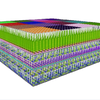A team of engineers and computer scientists at the University of California, Los Angeles (UCLA) has built a gadget that can detect and classify images at the speed of light.
Two prototypes of Chinas initial batch of exascale supercomputers are now up and running according to local news reports. And neither of them appears to be based on x86 technology.
Fujitsu and Mirantisare teaming up to build four petaflops of new HPC infrastructure for Hokkaido University, consisting of a supercomputer and cloud system.
The Defense Advanced Research Projects Agency (DARPA) has selected the teams for two research programs that the agency hopes will provide technologies to transcend the limits of Moores Law.
The Texas Advanced Computing Center (TACC) has won the competition for the NSFs latest leadership-class supercomputer.
In my role as an independent advisor to industry users of high performance computing, I recently helped to coordinate a private gathering of leading industry users of HPC no HPC centers, or vendors, just the users of HPC in industry meeting as peers. One key topic we discussed was things that might significantly change how industry deploys and uses high performance computing, what I refer to as HPC disruptors.
A slide from what appears to be an Intel presentation delivered in Chinaillustrates the companys roadmap for its Xeon Scalable Processor, Omni-Path fabric, and HPC server chip line.
The US Defense Advanced Research Projects Agency has announced a program that aims to bring new ideas in artificial intelligence to proof-of-concept within 18 months.
The US Exascale Computing Project (ECP) has set up its sixth co-design center, this one focused on machine learning (ML) technologies.










